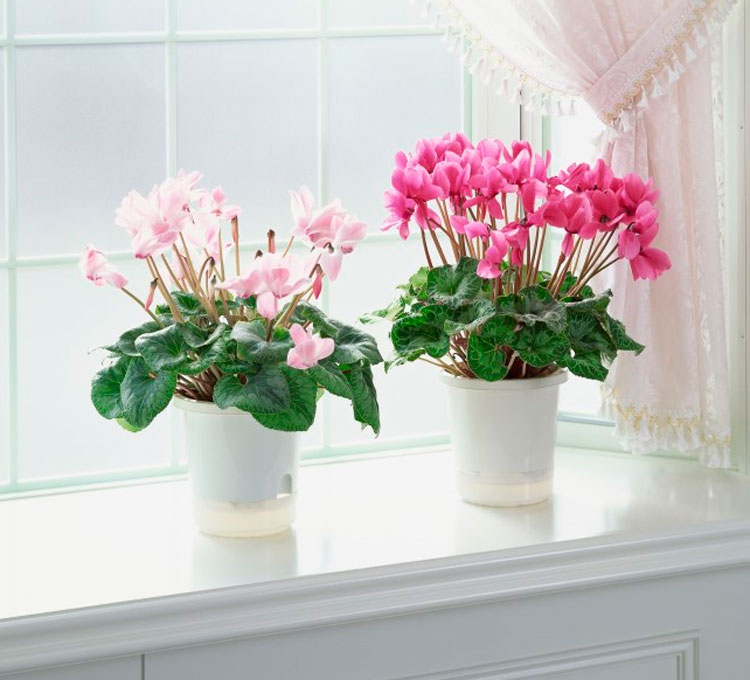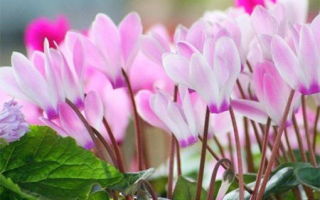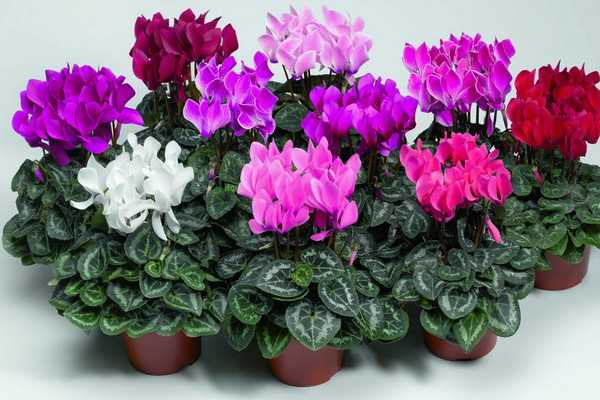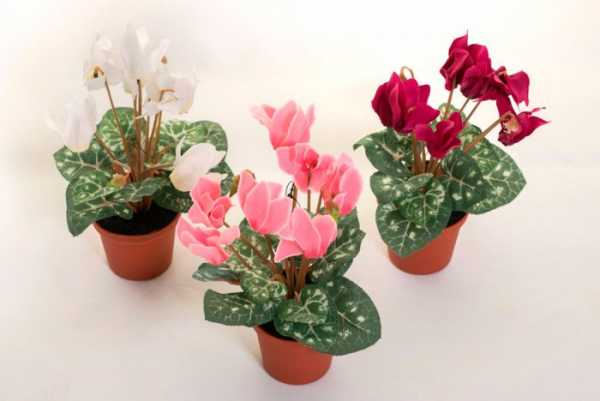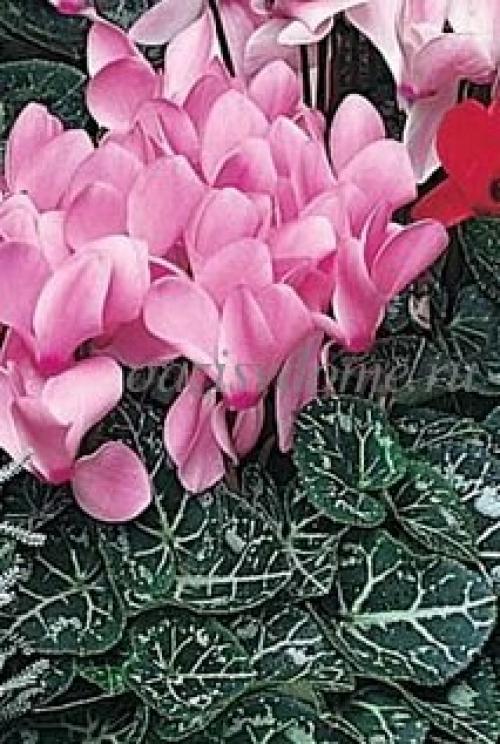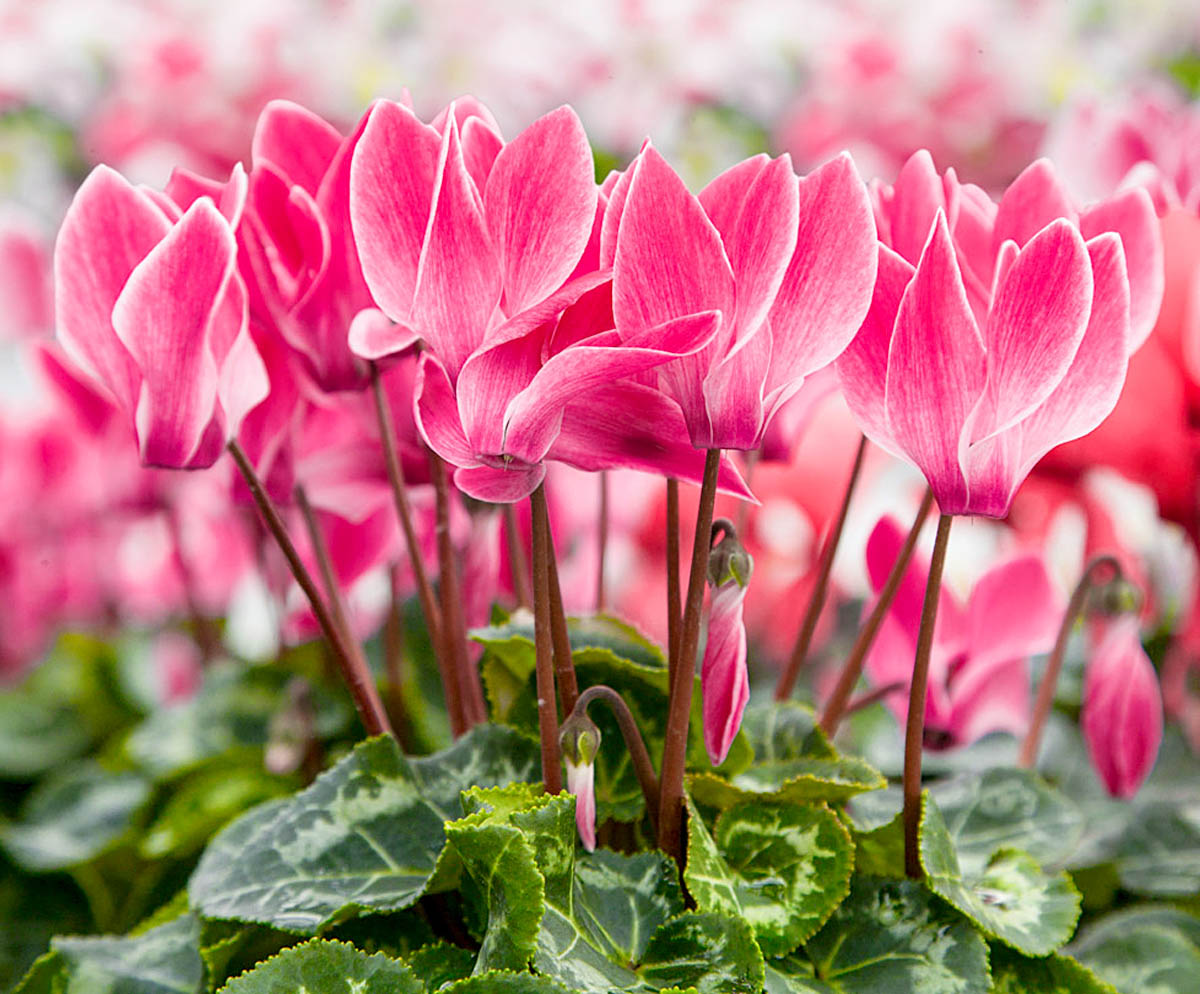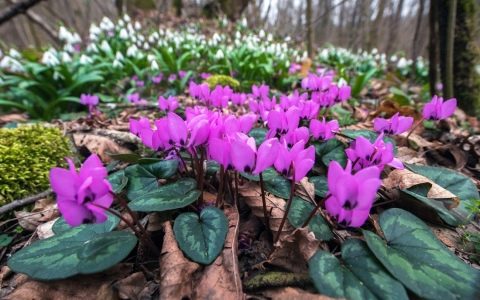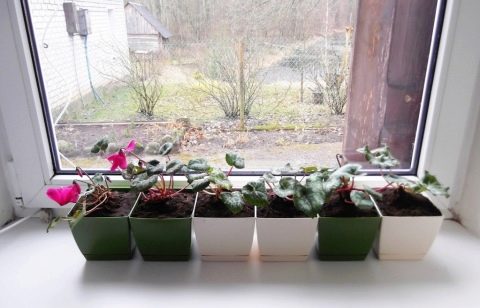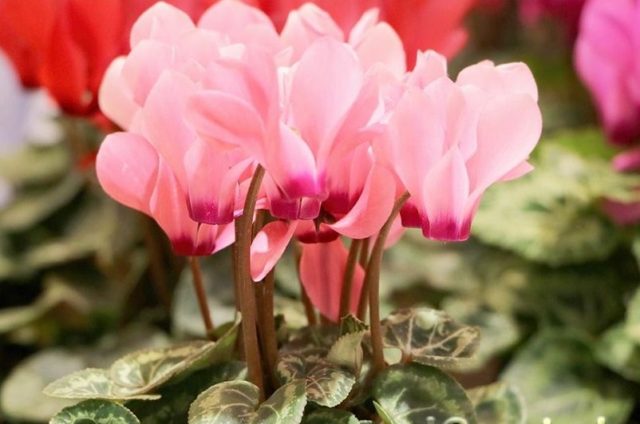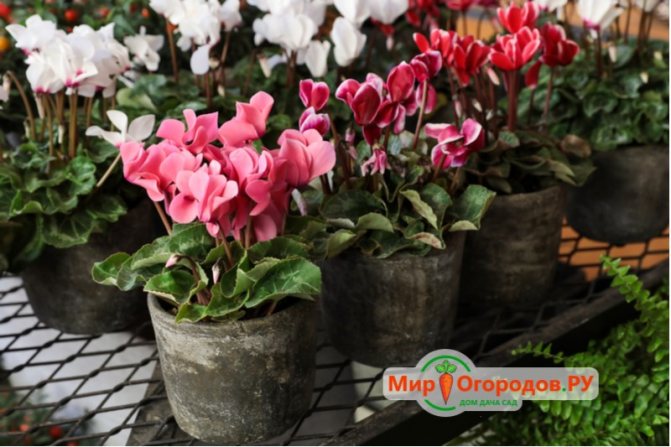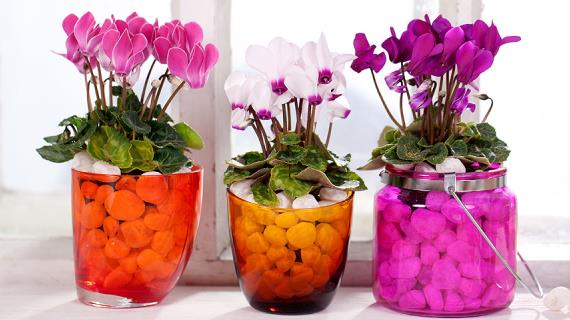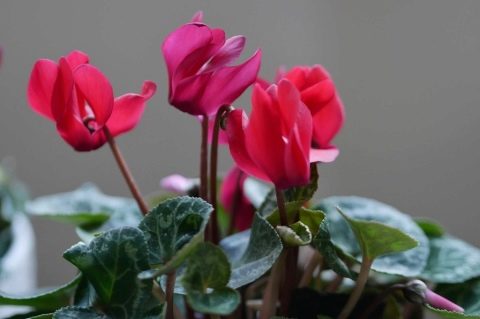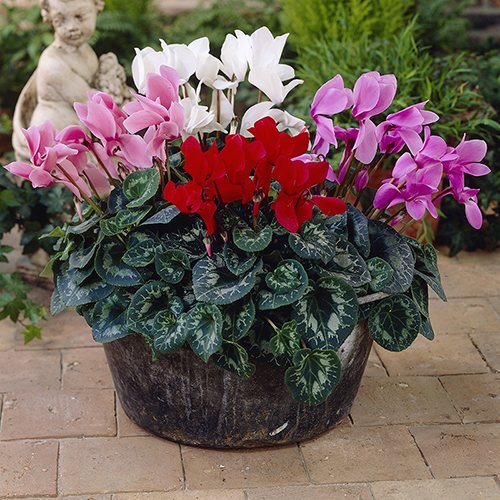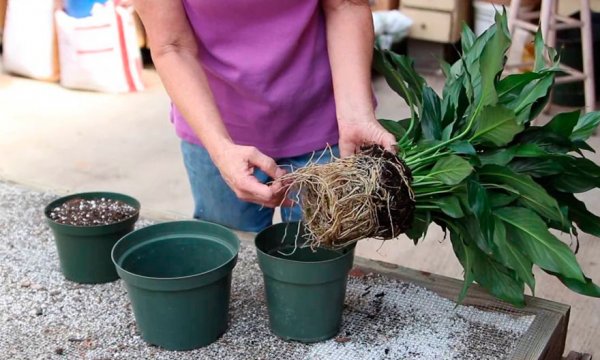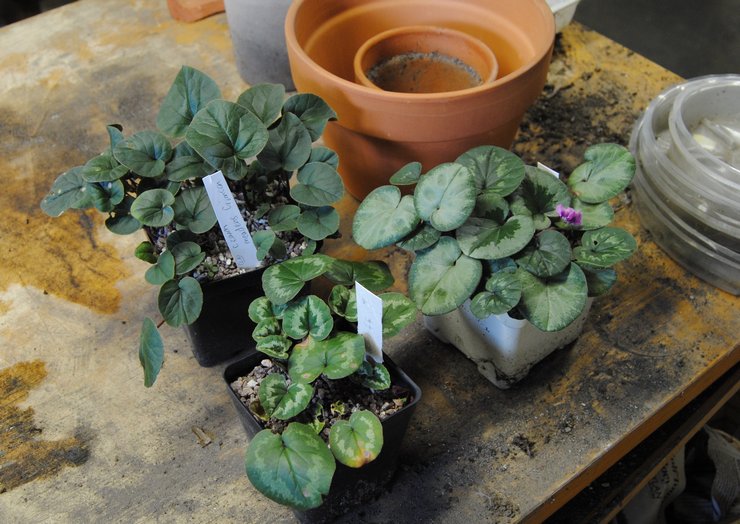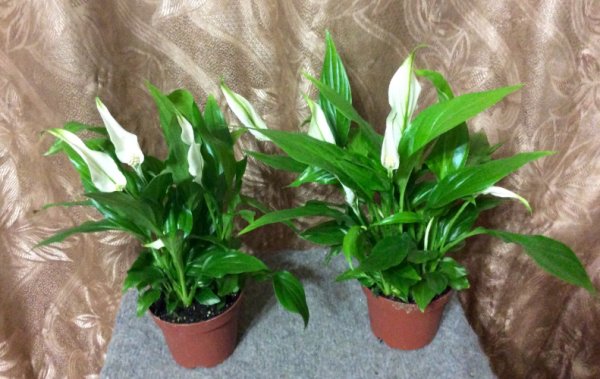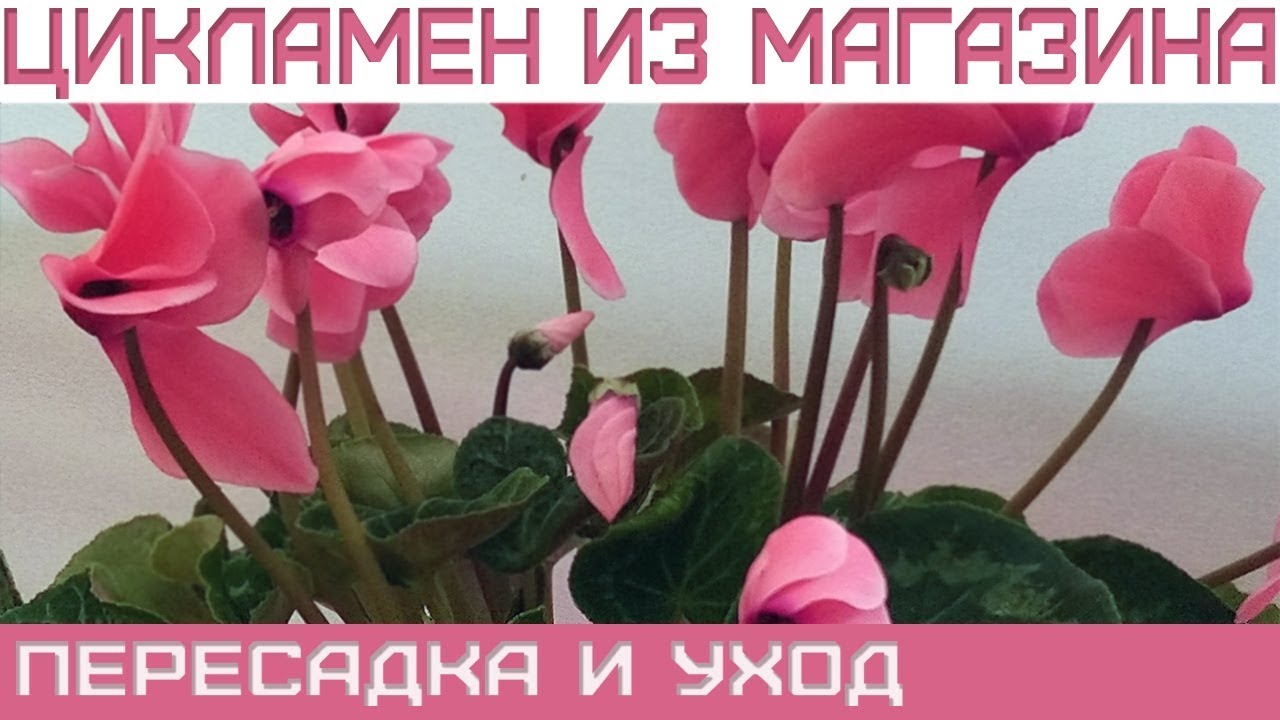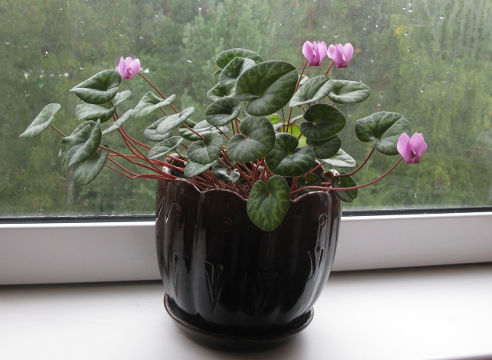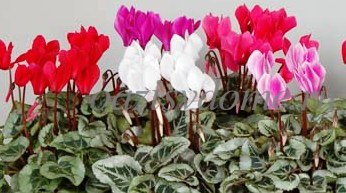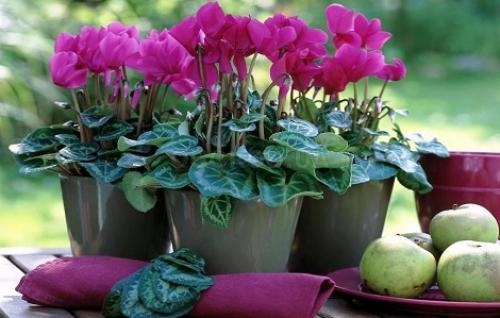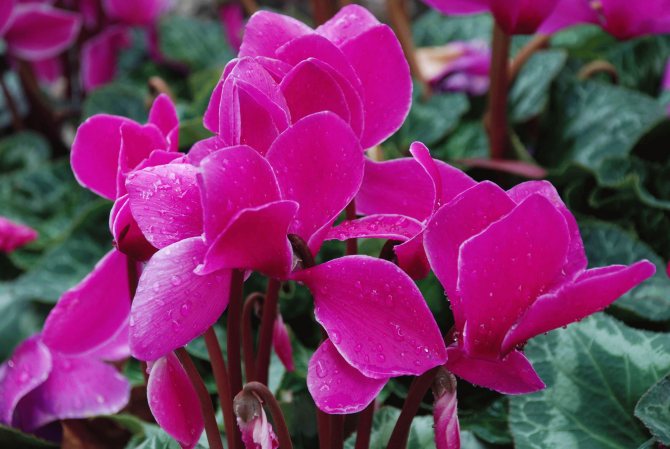When is it time to transplant cyclamen
Cyclamen is often referred to as the alpine violet from the Mediterranean. The petals of its flowers are compared to the wings of variegated moths gathered above the greenery. After all, it blooms with the most incredible colors and shades: delicately scarlet, snow-white, purple, crimson, cherry, apricot and even lilac.
The sizes of the flowers are simply huge and generally tiny. A huge number of buds are knocked out with a simultaneous flowering of 15 flowers.
You need to water the flower with settled soft water, on the edge of the container, so that moisture does not get into the growth zone. It is also contraindicated to water the leaf plates and at the point of their germination.
Cyclamen needs good lighting and ventilation in the room. He also loves cool temperatures - no higher than 15 degrees. Moreover, in such ascetic conditions, cyclamen blooms much longer. But he does not tolerate drafts. The plant is especially sensitive to them after transplanting the cyclamen. Leaves that have become yellow after the flowers wither should be pulled out with your fingers, and not with any devices such as a knife or tweezers. The leaves that have become obsolete should be unscrewed, but as carefully as possible so as not to destroy the growth zone.
On a faded flowerpot, the tuber peeps out from under the ground completely naked. During this period, watering should be significantly limited, but not completely stopped. The best watering method for the suspended animation period is in the pan. During this time, the pot is placed in the shade. And only with the appearance of young growth, which usually happens in summer, but before the beginning of budding, the cyclamen can be transplanted.
Also, a transplant is necessary when the roots grow so much that they do not fit in a pot, or when depleted soil should be replaced. In no case should you transplant a flowering cyclamen.
The cyclamen brought from the store is often also transplanted. By pulling the plant out of the pot, you can determine the need for a transplant.
If the time of the transplant is chosen correctly, this is already half the success of this delicate matter. Therefore, you should not do a transplant just like that when the time appears.
Soil selection
How to transplant flowers? The success of this process largely depends on the correct choice of soil. For each plant, a special soil is selected, designed specifically for it. Purchase the required composition at the flower shop. When buying slowly, read the instructions on the packaging
Pay particular attention to the composition and acidity of the soil

In the absence of the necessary substrate, purchase a mixture, which is used for indoor plants from the same family. Do not use soil from your garden for transplanting, its composition is most likely not suitable for your flower. In addition, it can contain pathogens and pests. Before using the soil, it is best to sterilize it in an oven at a temperature of 100 degrees. This will be a good prophylaxis for the destruction of viruses and microbes.
Plant preparation
When growing cyclamen at home, proper care is required for its full flowering. Moreover, the care will be almost the same for all varieties. Most often, the Persian variety is grown at home. But there are a lot of other varieties.

All varieties (European, Persian, etc.) involve periodic transplantation
Please note that you need to transplant cyclamen once a year and only after the end of the flowering period.A blooming flower should not be touched in the same way as one that is in the budding stage.
In order for the transplant to be successful at home, it is necessary to properly prepare for this procedure. First, you should prepare the ground. The speed of acclimatization of the plant to it depends on how correctly the soil was selected. The land in which the flower was located during the year is quickly depleted, especially without additional feeding, which can lead to the death of the plant. Therefore, the soil should be selected correctly even at the stage of preparation.
In the process of transplanting, the soil must be completely replaced. A properly prepared soil composition is the key to the success of the entire procedure. For cyclamen (varieties Persian, European, etc.) grown at home, the soil should have the following composition:
- leafy land;
- humus;
- sand;
- peat.

Before proceeding with the transplant, the prepared or purchased soil must be calcined in the oven for an hour. In addition to the oven, you can use a regular frying pan. Also, the soil can be simply treated with a solution of potassium permanganate. This procedure must be done in order to prevent infection of the plant with fungi and other pathogenic microorganisms.
At this stage, it will be correct to prepare another pot as well. It must be slightly larger. But the pot doesn't have to be very large. Otherwise, water will stagnate in the soil, which will lead to rotting of the tuber. If the selected pot is smaller, then the cyclamen may begin flowering ahead of schedule. In principle, an old pot can also be used, but it should be well washed and disinfected.

Note that the pot must have holes in the bottom to create excellent drainage from pebbles or expanded clay. If this is not done, the soil in the future will become very waterlogged, which will lead to the death of the flower, even if the care is correct
The plant itself does not need to be specially prepared. The only thing to consider is that the transplant is carried out before the beginning of budding in the summer (mid-summer). Although different varieties (Persian, European, plateau, etc.) may have a slightly different period, suitable for transplanting. The time when it is possible to transfer a flower to a new pot is determined by the stage of sleep and active growth. The signal that the plant can be transplanted is the appearance of several new leaves on the tuber after it completes the dormant stage.
Plant transplant
One of the basic requirements for comfort for this flower is a small pot, which becomes cramped very quickly. It is advisable to transplant cyclamen annually. This procedure will avoid root diseases and stimulate active flowering.
The process itself consists of the preparatory and main stages, where the initial stage should be given special attention.

Flower splendor
Bush preparation
It should always be remembered that transplanting puts the plant under stress. Therefore, the cyclamen should be prepared for the upcoming procedure. First of all, they are determined from the time of the event - it must coincide with the beginning of growth.
Note! In Persian varieties, waking up from sleep occurs in different months, while in European varieties this phase is practically absent. The signal to when you can transplant cyclamen will be the appearance of new leaves on the tuber
When preparing a plant, the following actions are carried out:
- the flower is carefully removed from the old pot;
- shake the soil off the roots and examine them;
- detecting rot and other violations, the problem roots are cut off.
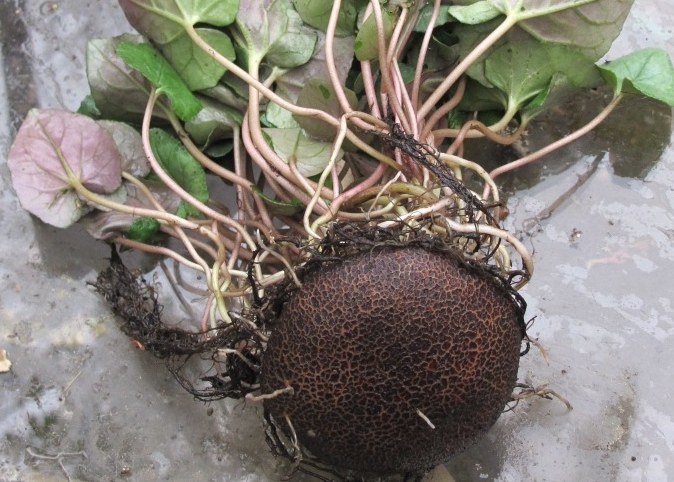
Cyclamen taken out of the pot
The plant is placed for some time in a weak solution of potassium permanganate to disinfect the sections. Next, proceed to the preparation of a new container.
Pot and soil selection
You should not take a wide container, otherwise the plant will direct the main forces to the development of the root system to the detriment of the aboveground part.It follows from the fact that the diameter of the pot should exceed the size of the tuber by only 2-3 cm.
Important! Regardless of whether the container is new or used, it is pre-disinfected and only then filled with soil. On sale there is a ready-made soil mixture "Tulip", suitable for flowering indoor plants
You can make a substrate yourself by taking:
On sale there is a ready-made soil mixture "Tulip", suitable for flowering indoor plants. You can make a substrate yourself by taking:
- 1 part of peat, humus, sand;
- 3 pieces of leafy land;
- a little vermiculite (vermione).
To avoid infections, destroy the larvae of pests, before transplanting the cyclamen into another pot, the soil must be calcined in the oven for 2 hours.
Process
Having finished with the preparatory steps, they begin to plant the plant in a new container. The step-by-step algorithm looks like this:
- a small layer of broken brick or expanded clay is laid out on the bottom of the pot;
- fill the container with soil;
- a tuber is placed in the center, sprinkling the bush with earth from the sides;
- the soil is tamped and moistened.
If after watering the soil has subsided a little, the soil is still poured into the pot.
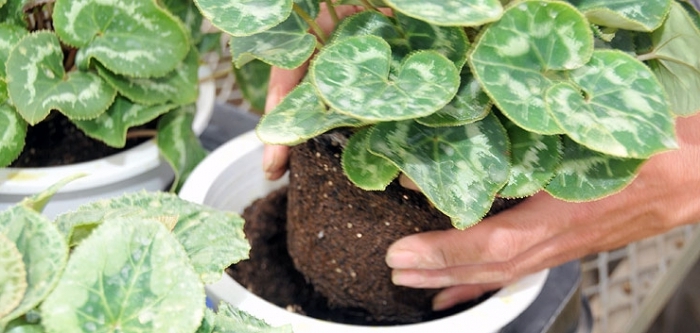
Transplanting a flower into a new pot
When digging in cyclamen, the tuber is not completely buried. In a Persian variety, it should look 1/3. At the European soil-free, 1.5 cm of the top is left.
What is necessary?
To transplant a purchased plant into another pot, you should prepare everything you need in advance.
Landing capacity. You can choose a pot made of plastic or ceramic, as long as it is not too large and has a good drainage hole. Cyclamen loves a tight container, so we choose a new pot 2-4 centimeters larger than the previous one. The new pot must have a tray to collect excess moisture.
Soil for planting. You can use any soil that is intended for decorative flowering plants. Cyclamen loves when the soil is loose and rich in organic matter. For a plant, choose slightly acidic soils, the optimum acidity is 5.0-6.5 pH.
Baking powder for soil. It is necessary to add loosening components to the soil. To do this, you can take vermiculite, coarse river sand, coconut fiber, chopped pine bark.
Drainage material. Fine expanded clay and gravel are used as drainage.
Fertilizers. After transplanting, the cyclamen can not be fertilized for 1-2 months, since it will take useful trace elements from the soil. After this time, you need to stock up on fertilizer. It can be a liquid fertilizer for decorative flowering plants of the FORTE trademark, the drug Cyclamen, Agricola.
Remedies
Cyclamen is a poisonous plant and precautions must be taken when working with it. To perform a flower transplant, you will need a pair of rubber gloves.

